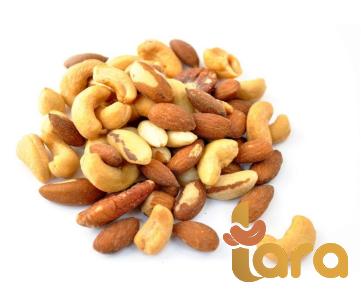In the vast landscape of American Sign Language (ASL), one cannot overlook the importance of everyday words and phrases that enable effective communication. “Peanut” is an integral part of this lexicon, helping people with hearing impairments to express their cravings, dietary preferences, and allergies. In this comprehensive guide, we will delve into the fascinating world of peanut in ASL, exploring its signs, cultural significance, and how it aids in fostering inclusive communication. Whether you are learning ASL, fascinated by sign languages, or simply curious about peanuts, join us on this journey of exploration. Content: 1. The Importance of ASL: Before delving into the specifics of peanut in ASL, it is essential to understand the significance of ASL as a language. ASL is a complete, natural language with its own syntax, grammar, and vocabulary. It plays a crucial role in the lives of Deaf individuals, allowing them to communicate, connect with others, and express their thoughts, emotions, and ideas.

.
 By embracing ASL, we embrace inclusivity and bridge the communication gap between the Deaf and hearing communities. 2. Signs for Peanut in ASL: In ASL, signs are vital for conveying ideas and concepts effectively. To sign “peanut” in ASL, follow these steps: a) Extend your non-dominant hand, palm facing upwards, to form a flat surface. b) With your dominant hand’s fingertips, repeatedly tap the palm of your non-dominant hand. The sign for “peanut” in ASL mimics the action of cracking a peanut shell open, emphasizing the visual representation to the viewer. 3. Variations and Regional Differences: Language is dynamic, with regional variations that add color and diversity to its expressions. Similarly, ASL may have variations in sign choices and regional differences. While the basic sign for “peanut” remains consistent throughout the ASL community, slight variations may exist depending on location or personal preference. It is essential to adapt and appreciate these variations, as they reflect the rich cultural diversity within the Deaf community. 4. Cultural Significance of Peanut in ASL: Beyond its practical use in communication, the sign for “peanut” in ASL holds cultural significance.
By embracing ASL, we embrace inclusivity and bridge the communication gap between the Deaf and hearing communities. 2. Signs for Peanut in ASL: In ASL, signs are vital for conveying ideas and concepts effectively. To sign “peanut” in ASL, follow these steps: a) Extend your non-dominant hand, palm facing upwards, to form a flat surface. b) With your dominant hand’s fingertips, repeatedly tap the palm of your non-dominant hand. The sign for “peanut” in ASL mimics the action of cracking a peanut shell open, emphasizing the visual representation to the viewer. 3. Variations and Regional Differences: Language is dynamic, with regional variations that add color and diversity to its expressions. Similarly, ASL may have variations in sign choices and regional differences. While the basic sign for “peanut” remains consistent throughout the ASL community, slight variations may exist depending on location or personal preference. It is essential to adapt and appreciate these variations, as they reflect the rich cultural diversity within the Deaf community. 4. Cultural Significance of Peanut in ASL: Beyond its practical use in communication, the sign for “peanut” in ASL holds cultural significance.
..
 Peanuts have long been a popular snack, an ingredient in various dishes, and an important agricultural product. By incorporating peanut as a sign, ASL acknowledges the cultural and dietary significance of this legume. This recognition promotes inclusivity, enabling Deaf individuals to partake in conversations about food, recipes, and culinary experiences. 5. Responses and Context: Understanding the responses and context associated with the sign for “peanut” in ASL further enhances one’s comprehension of the language. For example, when discussing allergies, someone fluent in ASL might use the sign for “peanut” and combine it with signs for “allergic” or “reaction.” This combination conveys the relevant context and allows for clear communication about potential allergens or dietary restrictions involving peanuts. 6. Expanding Vocabulary Beyond “Peanut”: To truly grasp ASL and communicate effectively, it is important to expand vocabulary beyond just basic signs. By learning additional vocabulary related to peanuts, such as “peanut butter,” “nut allergy,” or “peanut oil,” one can navigate conversations with more complexity and precision.
Peanuts have long been a popular snack, an ingredient in various dishes, and an important agricultural product. By incorporating peanut as a sign, ASL acknowledges the cultural and dietary significance of this legume. This recognition promotes inclusivity, enabling Deaf individuals to partake in conversations about food, recipes, and culinary experiences. 5. Responses and Context: Understanding the responses and context associated with the sign for “peanut” in ASL further enhances one’s comprehension of the language. For example, when discussing allergies, someone fluent in ASL might use the sign for “peanut” and combine it with signs for “allergic” or “reaction.” This combination conveys the relevant context and allows for clear communication about potential allergens or dietary restrictions involving peanuts. 6. Expanding Vocabulary Beyond “Peanut”: To truly grasp ASL and communicate effectively, it is important to expand vocabulary beyond just basic signs. By learning additional vocabulary related to peanuts, such as “peanut butter,” “nut allergy,” or “peanut oil,” one can navigate conversations with more complexity and precision.
…
 ASL learners are encouraged to explore supplemental vocabulary resources and build a rich linguistic foundation, allowing for greater fluency and accuracy in communication. 7. The Peanut in ASL Literature and Media: ASL literature and media play a crucial role in preserving and enriching the language. Although it may not be immediately apparent, peanuts have been featured in ASL poems, stories, skits, and songs. These artistic expressions provide a platform for Deaf artists to explore identity, culture, and the unique experiences of the Deaf community. By incorporating peanuts into ASL literature and media, artists celebrate the rich tapestry of human life and experiences. 8. The Peanut as a Metaphor: Beyond its direct representation, the sign for “peanut” can be used metaphorically. In ASL poetry, for instance, the peanut can symbolize diversity, uniqueness, and the beauty of different perspectives coming together. Metaphoric signs, such as the peanut, add depth and nuance to ASL communication, demonstrating the versatility of this rich visual language. 9. Busting Myths and Challenging Stereotypes: Misconceptions about sign languages, including ASL, still persist in society. This often leads to stereotypes, such as the assumption that sign languages lack complexity or nuance. Exploring the intricacies and cultural significance of a sign like “peanut” in ASL helps break down these stereotypes, showcasing the depth and beauty of this unique language. By embracing ASL and learning about its vocabulary and cultural context, we can challenge misconceptions and foster a more inclusive society. Conclusion: Understanding the significance of everyday signs like “peanut” in ASL is essential for effective communication and promoting inclusivity.
ASL learners are encouraged to explore supplemental vocabulary resources and build a rich linguistic foundation, allowing for greater fluency and accuracy in communication. 7. The Peanut in ASL Literature and Media: ASL literature and media play a crucial role in preserving and enriching the language. Although it may not be immediately apparent, peanuts have been featured in ASL poems, stories, skits, and songs. These artistic expressions provide a platform for Deaf artists to explore identity, culture, and the unique experiences of the Deaf community. By incorporating peanuts into ASL literature and media, artists celebrate the rich tapestry of human life and experiences. 8. The Peanut as a Metaphor: Beyond its direct representation, the sign for “peanut” can be used metaphorically. In ASL poetry, for instance, the peanut can symbolize diversity, uniqueness, and the beauty of different perspectives coming together. Metaphoric signs, such as the peanut, add depth and nuance to ASL communication, demonstrating the versatility of this rich visual language. 9. Busting Myths and Challenging Stereotypes: Misconceptions about sign languages, including ASL, still persist in society. This often leads to stereotypes, such as the assumption that sign languages lack complexity or nuance. Exploring the intricacies and cultural significance of a sign like “peanut” in ASL helps break down these stereotypes, showcasing the depth and beauty of this unique language. By embracing ASL and learning about its vocabulary and cultural context, we can challenge misconceptions and foster a more inclusive society. Conclusion: Understanding the significance of everyday signs like “peanut” in ASL is essential for effective communication and promoting inclusivity.











Your comment submitted.